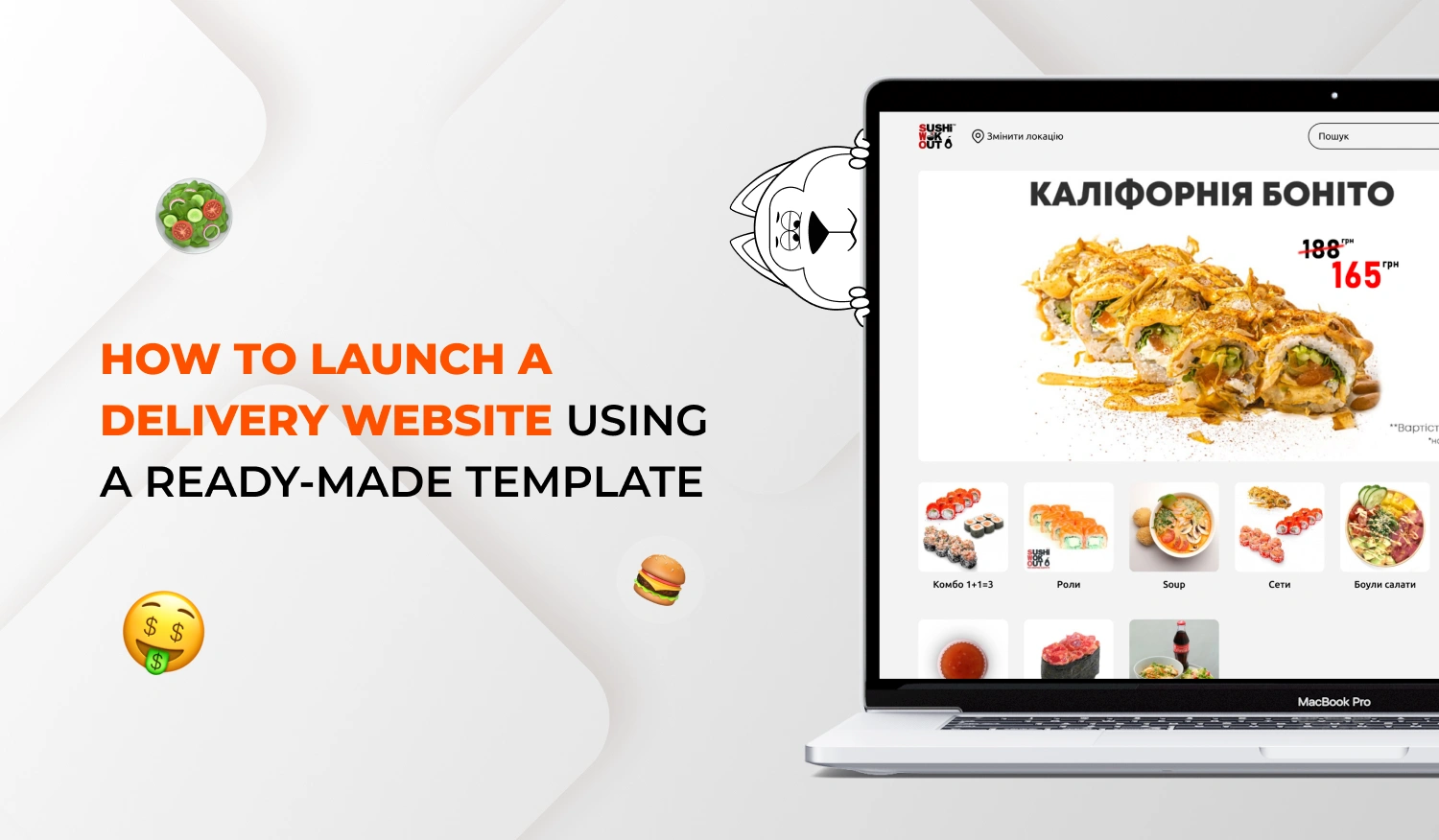In 2025, delivery websites are essential for businesses in e-commerce, HoReCa, and logistics. According to Statista, the online delivery market grows by 12% annually, with 75% of customers preferring orders via websites or mobile apps. Building a website from scratch can take months and cost tens of thousands of dollars, but ready-made templates on platforms like Shopify, Wix, or WordPress enable you to launch a delivery website in 1–4 weeks, saving time and budget. This article offers a step-by-step plan for using pre-built platforms to quickly start an online business, focusing on SEO optimization, customization, and integration.
Why Choose a Ready-Made Template for a Delivery Website?
Ready-made templates are pre-designed layouts and functionalities that can be tailored to your business. They are ideal for startups, small businesses, and companies aiming for rapid market entry. Key benefits:
- Time savings: Launch in 1–4 weeks instead of 3–12 months.
- Cost reduction: Pre-built solutions are 60–80% cheaper than custom development.
- Ease of customization: No-code platforms allow design changes without coding.
- SEO-friendliness: Templates are optimized for search engines.
Ready-made templates are popular for food delivery, grocery delivery, flower delivery, and other goods.
1. Choosing a Platform for Your Delivery Website
Popular Platforms
Select a platform that meets your needs:
- Shopify: Perfect for e-commerce delivery, with built-in analytics and logistics integration.
- Wix: Flexible design for HoReCa and small businesses, with SEO support.
- WordPress (WooCommerce): Robust platform for complex delivery websites with plugins.
- Squarespace: Stylish templates for niche businesses (e.g., flower delivery).
Selection Criteria
- Functionality: Availability of carts, payment gateways, order tracking.
- Scalability: Ability to add new features.
- Cost: From $20/month (Wix) to $300/year (Shopify).
2. Selecting and Customizing a Ready-Made Template
Finding a Template
Most platforms offer libraries of ready-made templates for delivery websites:
- Shopify: Themes like Porto or Fastest, optimized for e-commerce.
- Wix: Templates for restaurants and grocery delivery.
- WordPress: Plugins like FoodStore for HoReCa.
Customizing Design
Tailor the template to your brand:
- Add your logo and color scheme.
- Adjust UX/UI for intuitive navigation.
- Create product categories (e.g., pizza, sushi, groceries).
3. Integration of Delivery Functionality
Cart and Payment Gateways
Add a shopping cart and integrate with payment systems:
- Stripe, PayPal, LiqPay for seamless payments.
- Delivery calculator based on geolocation.
Logistics
Integrate delivery services:
- Nova Poshta, Ukrposhta for Ukraine.
- FedEx, UPS for international delivery.
- GloriaFood for HoReCa with order tracking.
4. SEO Optimization for Traffic Growth
Keywords
Use keywords like "food delivery", "online store" in:
- Headings (H1, H2).
- Meta tags (title, description).
- Product descriptions.
Technical Optimization
- Speed up loading with WP Rocket (WordPress) or Shopify’s built-in tools.
- Ensure mobile responsiveness (60% of traffic is mobile).
5. Marketing Integration
Push Notifications and Email
Add tools for customer engagement:
- Push notifications via OneSignal for promotions.
- Email campaigns via Mailchimp for discount reminders.
Social Media
Integrate Instagram Shopping or Facebook Pixel for targeted ads.
6. Testing Before Launch
Functionality Testing
Conduct testing:
- Functional: Cart, payments, order tracking.
- Performance: Loading speed.
- Security: Customer data protection (SSL certificate).
Tools: Google PageSpeed Insights, GTmetrix.
Cross-Browser Compatibility
Ensure the site works in Chrome, Safari, Firefox.
7. Launch and Maintenance
Site Publication
Upload the site to hosting (built-in for Shopify/Wix or separate for WordPress). Set up a domain (e.g., www.yourdelivery.com).
Technical Support
Most platforms offer 24/7 support. For WordPress, hire an admin or use plugins like UpdraftPlus for backups.
Delivery Website Trends in 2025
- AI personalization: Product recommendations based on preferences.
- AR menus: 3D previews of dishes or products.
- Voice ordering: Integration with voice assistants.
- Sustainability: Green delivery options.
Ready-made templates on platforms like Shopify, Wix, or WordPress enable a fast delivery website launch, saving time and budget. A step-by-step plan covering template selection, integration, SEO optimization, and testing ensures an efficient start. From HoReCa to e-commerce, these solutions offer flexibility and scalability. To grow your delivery business, choose a ready-made template and consult professionals for customization.
Take a step closer to the future today by ordering a mobile app for HoReCa from QB Tools. It’s the perfect solution for your restaurant, casual café, sushi bar, or pizzeria to organize food delivery and implement a loyalty system for guests. Visit https://qbtools.com.ua to order your app.

 Blog
Blog

 Career
Career
 Instagram QB Tools
Instagram QB Tools
 Log in
Log in


 Support chat
Support chat






